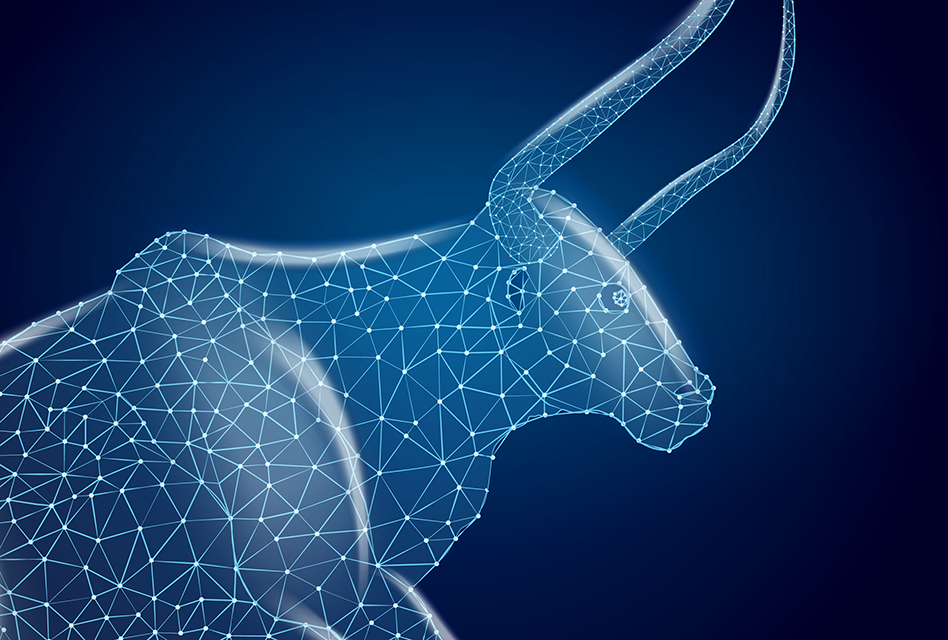87% of shoppers worldwide want to engage with brands that have loyalty programs. This wish is particularly strong among younger generations, with more than half of older millennials (55%), younger millennials (53%), and Gen Z (51%) indicating they would rarely pick a different brand if they really love the one they currently support.
These stats show the need for meaningful relationships being built between brands and their customers. In focusing on brand loyalty and creating programs that resonate, brands can turn shoppers into committed fans.
As technology advances, loyalty programs should likewise change. With new innovative tools, it would be quite effective if NFT and blockchain loyalty programs were considered to generate more personalized, involving, and deeper customer experiences. How can they get this done? Let’s figure this out together.
Traditional Loyalty Programs
Loyalty programs help generate repeat business when rewards are offered, encouraging customers to return. This mostly leads to higher spending since members are likely to spend more than non-members.
In traditional loyalty programs, customers are rewarded with discounts, free things, or special deals for returning customers. The most common form is a point-based system, wherein customers earn points on money spent that can later be collected towards rewards. Sounds good. However, there is one big challenge related you can’t ignore.
Lack of personalization. Traditional loyalty programs offer the same rewards to every program member. Moreover, these programs are so pervasive across industries that little differentiation can be made between them. Everyone sought personalization way back in 2021, when more than 76% of respondents claimed they became frustrated when these expectations or personalized experiences weren’t met. So, in 2024, it just can’t be a good fit.
Understanding Blockchain Technology and Its Role in Loyalty Programs
Let’s say one brand was super excited to launch its loyalty program. First of all, they did what was common — meaning they signed up the users and stored information on their server. And… customers happily started collecting points with every purchase. But soon, some issues began to pop up.
Customers’ points in several different databases were controlled by various departments, making any complete view of customer loyalty status almost impossible. That fragmentation led to discrepancies and confusion; customers calling and inquiring about their points found information inconsistent. They understood they needed a more integrated and reliable solution to regain trust and increase customer retention. Then, they learned about blockchain, which was believed to deal with that effectively. They decided to give it a shot.
Even though it’s a hypothetical scenario, it may happen in reality. And it happens! At Aetsoft, we’re experienced in addressing challenges like these and guiding our clients toward the ideal blockchain-powered customer loyalty programs.
What is Blockchain?
Blockchain is a system for storing information in a series of connected blocks. Each block contains its own data, like a list of recent transactions with timestamps and a special code, called a hash, created using the block’s contents. This hash also links the block to the previous one, forming a secure chain of blocks. As new transactions occur, new blocks are added.
Three essential parts comprise a block: a unique ID (the hash), the transaction details, and the link to the previous block. The hash is a fingerprint of the block’s data — if even a tiny part of the data changes, the hash will change, too. Since each block depends on the hash of the previous one, any attempt to change the data in a block would break the link to the following blocks, making blockchain highly secure and tamper-resistant.
Smart contracts always come up whenever blockchain is mentioned because they are among the major uses of the technology. Smart contracts are programmable contracts that enable conditions to be executed automatically without any intermediary present. Because smart contracts are on-premise, they equally inherit all the security and transparency advantages of encryption technology — thus opening up opportunities for more secure and efficient processes across various industries, including loyalty programs.
How Blockchain Elevates Traditional Loyalty Programs
In contrast to traditional programs where loyalty points were confined in the ecosystem of one company, it is now easy for customers to gain and redeem rewards across different platforms or brands within the same blockchain network. How? Examine the step-by-step workflow to gain insights into the implementation.
Blockchain Loyalty Program Workflow
1. Users
- Customers sign up for the loyalty program.
- Users make purchases and earn points or tokens.
2. Blockchain
- Transaction data and rewards are recorded on the blockchain.
- The blockchain ensures the security, transparency, and immutability of data.
3. Rewards
- Users can exchange their points for various rewards (discounts, gifts, etc.).
- Rewards may be represented as tokens stored in the user’s wallet.
4. Partners
- Brands and companies offer products and services in exchange for tokens.
- Blockchain connects all partners through a shared network, avoiding separate integrations.
- Smart contracts establish standardized rules and automate interactions among participants.
- Partners gain access to real-time analytics and customer data, providing deeper insights into program performance.
5. Management
- Program owners can manage rewards, track user activity, and maintain transparency in the process.
This schema illustrates how blockchain provides reliability and transparency in managing a loyalty program.

Advantages of Blockchain Loyalty
Transparency and Trust
In loyalty programs on blockchain, transparency comes from decentralization, where data is stored across multiple nodes, making it nearly impossible to manipulate. Once recorded, transactions are immutable, allowing customers to check their points and history anytime. Encryption shields sensitive information, while smart contracts automate the processes to minimize the chances of error. It is this very transparency and immutability of the blockchain that enables fast and impartial dispute resolution because all records are instantaneous and verifiable. This way, everything comes together to build customer trust.
Single Integration
In a traditional setup, organizations have to create multiple integrations with each partner, which means higher complexity and overhead. Instead of integrating each organization with every other organization, resulting in a complex, very costly set of connections, companies can connect into a single blockchain platform. Not only does this make integrations much easier, but it also provides a much more integrated, mutually rewarding experience for customers.
Flexibility and Adaptability
Changes to internal systems or API integrations within a connected network of organizations introduce risk; when one participant alters their system, all others must update their integrations, triggering a costly and time-consuming chain reaction. However, blockchain technology mitigates these risks. When one company modifies its internal system, other participants remain unaffected as long as the blockchain integration is intact. This flexibility allows organizations to evolve independently without requiring continuous rework from others, which is particularly advantageous for loyalty systems.
Security and Privacy
First, all the data by clients will be encrypted. Even when blockchain may disclose some information, nobody can read it without special keys. Furthermore, data is located on a distributed network, making the system more susceptible to hacking. Users can control what information they share, and anonymous transactions are possible without disclosing personal information. Also, blockchain allows for checks without touching clients’ private info.
NFT Loyalty Programs: The Future of Customer Engagement
Let’s turn to that company that implemented a loyalty program on blockchain. The bonus points worked, but something felt like it was missing. It seemed like customers wanted something cooler.
While some still think of NFTs as just digital pictures, they are quickly becoming a groundbreaking way to own, trade, and interact with digital assets that are not only valuable but also completely unique. Each NFT can inherit real utilities and benefits or associate with them, serving as a special membership card for exclusive access to special services, events, or rewards both in the digital world and in real life. How do NFT and loyalty programs relate to each other?
What are NFTs?
NFTs, or non-fungible tokens, are unique digital assets in the blockchain. Unlike cryptocurrencies like Bitcoin, where one coin is identical to another, each NFT is exclusive and cannot be exchanged on a one-to-one basis.
Even though NFTs are digital, their ownership is recorded on the blockchain, which means no one can tamper with or erase that record. You’re the verified owner. This gives NFTs a level of authenticity and security that digital assets have never had before.
NFTs can act as keys that unlock special features within a game or ecosystem, such as access to exclusive levels, special abilities, VIP areas, and Exclusive Content. Other than in gaming, it could be a pass for event sales or even rewards from some loyalty programs to provide customers with special perks, discounts, or early access to certain products or services.
How NFT Enhances Traditional Loyalty Programs
NFT-based loyalty programs take some basis, but not necessarily all characteristics, from the blockchain. They focus on creating unique digital assets representing any kind of rewards or special privileges.

Advantages of NFT Loyalty Programs
Personalization
Instead of giving everyone the same bonuses, brands can look at customer data to create unique NFTs that fit individual interests. So, if someone often buys a particular product, they might get an NFT with exclusive discounts just for that item. NFTs can highlight a customer’s journey with the brand. For example, a customer could receive an NFT celebrating their first purchase. When rewards are tailored like this, the customer will feel appreciated, which has helped strengthen bonds with the brand.
Exclusivity
When brands drop unique NFTs, it makes customers feel like they own something super special that nobody else has. For instance, NFTs can be released in limited numbers, and when people know they’ve got a rare item, it seriously boosts the value of the reward. Holding an NFT can signify membership to an exclusive club or community, granting status within a social group or platform. This can include access to members-only forums, chat rooms, or social events. In fact, owning certain NFTs can become a status symbol, making them more hyped about the program and wanting to get involved.
Gamification
The idea is to add some game-like elements that get people more excited to participate. So, customers might have to collect ten unique NFTs. The NFT here turns into a digital asset used to grant special privileges that can be negotiated or traded. This gives customers ownership of their benefits, making the program more attractive.
Cross-Platform Reward Flexibility
Tokenized rewards in an NFT-based loyalty program can cross several platforms. This lets loyalty program members use their accumulated rewards or points not only in one system but even on other platforms or with other partners. This flexibility enhances the value of rewards to customers by allowing them greater exchange and usability of their earned NFT rewards, which in turn boosts their incentive to engage with the loyalty program.
Real-World Blockchain and NFT Loyalty Programs
While we can share a lot about why these programs are awesome, it’s important to back it up with real proof of their success.
Aetsoft
Aetsoft has provided a client with the Blockchain Loyalty Platform, a multifunctional digital network that allows users to get rewards in tokens and pay for some goods or services with the help of tokens. It gives merchants full control over the program’s rules, automates reward calculation, and keeps transactions secure.
Nike
Nike’s .Swoosh platform is an innovative Web3 ecosystem that integrates NFTs and virtual wearables. This unique marketplace allows users to explore, create, and trade digital assets like virtual sneakers and NFT collections. Nike’s .Swoosh not only connects people passionate about NFTs but also opens doors to exclusive real-life events.
Adidas
The “Into the Metaverse” is a collection developed in collaboration with projects like Bored Ape Yacht Club, which allows buyers to own exclusive digital items and grants access to future drops and experiences, blending the physical and digital realms.
Gucci
Gucci’s collaboration with 10KTF offers NFT holders exclusive access to physical products, blending digital and real-world luxury. For example, token owners of Gucci Vault Material NFTs can get wallets or bags in exchange for their tokens.
airBaltic
Planies is a unique collection of 10,000 cartoon aircraft collectibles on the Ethereum blockchain, powered by airBaltic. Each Planie features distinct artwork generated from 180 traits, including wings and engines. By linking a Planie to an airBaltic Club account, owners earn 20 loyalty points daily, redeemable for free flights or travel extras like luggage.
Lufthansa
The Lufthansa Innovation Hub, in collaboration with Miles & More, launched Uptrip as an extension of its existing loyalty services. The Uptrip app allows passengers of Lufthansa Group airlines to scan their boarding passes and exchange them for NFT collectible cards that can be stored in their crypto wallets.
Clinique
Clinique launched its first limited-edition NFT, “MetaOptimist”, offering three editions to Smart Rewards members through a social media contest. It was intended that the winners would receive the NFT, early access to Black Honey Almost Lipstick, and a yearly assortment of Clinique products for the next decade.
Lacoste
Their UNDW3 collection included 11,212 crocodile profile picture NFTs, which sold out within eight hours. Members of this Web3 universe gained exclusive access to creative sessions, contests, video games, and interactive conversations.
Wrapping up
So, how’s it going at that company that jumped on the blockchain and then the NFT loyalty train? They’ve totally shaken things up by turning the old-school way of building loyalty programs into something way more exciting and fresh. We’d bet 90% of their customers love these cool, secure options that just feel way more trustworthy and engaging.
If you are thinking about implementing a non-traditional loyalty program or just need a quick call to understand what’s better for your business, here we are.
FAQ About NFT and Blockchain Loyalty Programs
1. What is an NFT loyalty program?
This loyalty program with NFTs — non-fungible tokens — lets companies provide unique digital assets to customers, a mark of distinction, offering unparalleled benefits, exclusive savings, and extraordinary experiences. Unlike traditional loyalty points, these NFTs can be traded or sold, increasing customer value and engagement.
2. What is a blockchain-based loyalty program?
A blockchain-based loyalty program uses blockchain technology to manage and track loyalty rewards with high security and transparency. Some key features of these programs include transaction verification capability on a public ledger, enhancing trust, and, frequently, interoperability, where customers can use their rewards across platforms or merchants with convenience and added value.
3. What is blockchain reward?
Anything that is given as a reward through a blockchain system could be called a blockchain reward. These could be loyalty points, tokens, or cryptocurrencies rewarded for specific actions, like purchases or referrals. The best thing here is that they could be tradable or otherwise converted to other assets, greatly adding to their value.
4. What was the world’s first blockchain-based loyalty solution?
Identifying the very first blockchain-based loyalty solution is rather tricky because several companies have started working on this concept almost simultaneously. Appsolutely is, however, often mentioned among those who started blockchain loyalty with the launch of the LoyalCoin (LYL) and the LoyalPlatform back in late 2017. Appsolutely received much more media interest and market traction, positioning its solution as one of the leaders in this emerging market.








